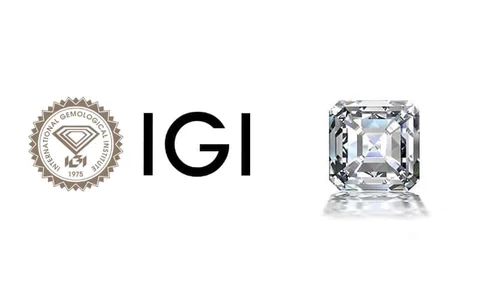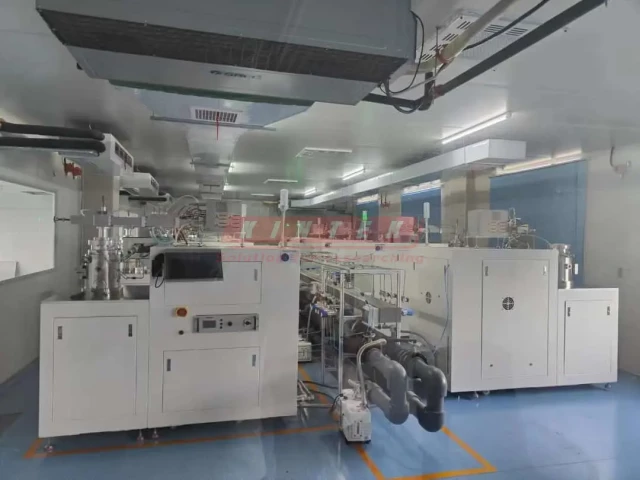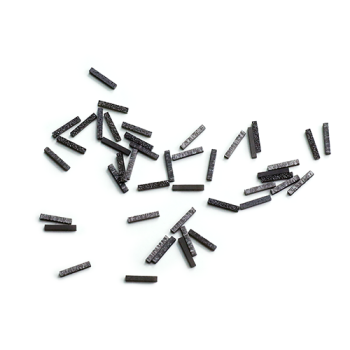Introduction to CVD Diamond Technology
CVD (Chemical Vapor Deposition) diamond technology is a process of growing synthetic diamonds in a laboratory. It involves the use of a hydrocarbon gas mixture as well as a high-energy heat source. The process takes place in a vacuum chamber where the carbon atoms separate from the gas mixture and settle on a diamond seed. Over time, the carbon atoms continue to accumulate on the seed, forming a diamond. CVD diamond technology is crucial in a variety of industries, including electronics, medical, and cutting tools. With its versatility and efficiency, it has become a popular choice for manufacturing high-quality, durable diamonds.
Table of Contents
- Introduction to CVD Diamond Technology
- Importance of CVD Diamond Machines
- The Process of Creating a CVD Diamond
- Selection of Diamond Seed and Chamber
- Carbon-rich Gas Flooding and Ionization
- Energy Supply Using Ionized Plasma or Heating
- Growth Regulation and Quality Control
- Post-Growth Treatment and Polishing
- Grading and Certification by Independent Laboratories
- Conclusion: Appreciation for the craftsmanship involved
Importance of CVD Diamond Machines
CVD diamond machines have gained significant importance in various industries and scientific research. These machines have unique properties that make them an indispensable tool in modern manufacturing processes.

Durable Cutting Tools
One of the primary applications of CVD diamond machines is in creating diamond-coated cutting tools that are durable and efficient. The diamond-coated cutting tools are suitable for cutting hard materials like iron, metal, stainless steel, etc. The high hardness of CVD diamond makes it equivalent to natural diamond, which is the most solid. Compared to other synthetic diamonds used in cutting operations, it has a hardness of 8,500 kgf/mm2. Moreover, the CVD diamond-coated tools have a longer tool life, which can last 2-10 times longer than PCD and work approximately 35% better than PCD.
High-Quality Diamond Films
CVD diamond machines can also produce high-quality diamond films that are used in electronic components such as transistors, diodes, and sensors. The diamond films produced by CVD diamond machines are of high purity and high quality. The size of diamond film can be larger while the cavity that is used to synthesize diamond is big enough under certain conditions, and many particles can grow at the same time, which will reduce production costs. The diamond films produced are used in various applications, such as creating diamond-coated implants that are biocompatible and long-lasting.
Environmental Benefits
Furthermore, CVD diamond machines are environmentally friendly compared to mined diamonds. The lab-grown diamonds are safer, more environmentally friendly, and cheaper to produce than mined diamonds. The process uses less energy to operate since it does not require extreme temperature and pressure requirements like HPHT.
In conclusion, CVD diamond machines are essential in various industries, including electronics, aerospace, and cutting tools. The machines' ability to produce high-quality diamond coatings and films makes them an indispensable tool in modern manufacturing processes. The machines are environmentally friendly, safer, and cheaper to produce than mined diamonds, making them a preferred option. The demand for diamond cutting tools is increasing, and with the progress in tool technologies, the overall performance of diamond tools has been greatly improved.
The Process of Creating a CVD Diamond
CVD (Chemical Vapor Deposition) diamond is a lab-grown diamond that is created by combining a carbon-rich gas with a substrate material. The process of creating a CVD diamond can be broken down into several steps:
Step 1: Cleaning the Substrate
The process begins by cleaning the substrate, which is the material that the diamond will be grown on. This is a critical step because any impurities or contaminants on the substrate can affect the quality of the final diamond.
Step 2: Placing the Substrate in the Chamber
Once the substrate is cleaned, it is placed into a vacuum-sealed chamber. The chamber is then filled with a mixture of hydrogen and methane gas. The gas mixture is heated to a high temperature, usually around 800°C, to break down the gas molecules.
Step 3: Formation of Carbon Atoms
As the gas mixture is heated, it breaks down and forms carbon atoms. These carbon atoms attach to the substrate, forming the diamond layer-by-layer. This process can take anywhere from a few hours to several days, depending on the desired size and quality of the diamond.
Step 4: Removing the Diamond
Once the diamond is formed, it is carefully removed from the chamber and undergoes a series of tests to ensure its quality and purity. The diamond is then cleaned and polished to produce optimal sparkle and brilliance.
Step 5: Certification and Grading
After the diamond is cleaned and polished, it undergoes a certification process, which includes grading and measuring the diamond's color, cut, clarity, and carat weight. Each diamond is given a grade, which determines its overall value.
Step 6: Application
The final product is a high-quality diamond that can be used for a variety of applications, including cutting tools, electronics, and medical devices. CVD diamonds are chemically pure and can be used for diamond deposition on substrates other than diamond.
In conclusion, the process of creating a CVD diamond is a fascinating and complex process that requires a great deal of skill and expertise. The diamond is grown layer-by-layer through the use of carbon-rich gas and a substrate material. After undergoing a certification process, the diamond is then used for a variety of applications, making it a valuable resource in various industries.
Selection of Diamond Seed and Chamber
The process of fabricating a CVD diamond machine is a multi-stage process that requires careful selection of materials and components to ensure that the final product is of high quality and precision. One critical stage in the fabrication process is the selection of the diamond seed and chamber.
Diamond Seed Selection
The diamond seed is the starting point for the growth of the diamond crystal. It must be carefully chosen for its size, shape, and quality, as these factors will impact the final quality of the diamond produced. The diamond seed is a thin slice of diamond, around 300 microns thick and 10x10mm, taken from a high-quality diamond created by HPHT. The diamond seed must be clean, as any trace elements or imperfections will be crystallized during CVD diamond growth, creating inclusions and blemishes.
Chamber Selection
The chamber is where the chemical vapor deposition process takes place. It must be designed to allow for precise control of the deposition process, including temperature, pressure, and gas flow rates. The chamber must be completely sealed to avoid any other gases from entering and disrupting the diamond’s growth.
Factors to Consider
The selection of the diamond seed and chamber is critical to the success of the CVD diamond machine and requires careful consideration of a range of factors, including cost, performance, and reliability. The diamond seed has to be of high quality to ensure that the final product has good clarity and color. The chamber must be designed to allow for precise control of the deposition process, and it must be made of materials that can withstand high temperatures and pressures.
Conclusion
In conclusion, the selection of the diamond seed and chamber is a crucial part of the fabrication process of a CVD diamond machine. The diamond seed must be carefully chosen for its size, shape, and quality, and the chamber must be designed to allow for precise control of the deposition process. With the right selection of diamond seed and chamber, a CVD diamond machine can produce high-quality diamonds with a wide range of applications in fields such as semiconductors, optics, and electronics.
Carbon-rich Gas Flooding and Ionization
The process of fabricating a Chemical Vapor Deposition (CVD) diamond involves several steps, one of which is carbon-rich gas flooding and ionization.
The first step is introducing a gas mixture containing carbon into a reaction chamber. This gas mixture is typically composed of methane and hydrogen.
Next, an electric field is applied to the reaction chamber, ionizing the gas mixture. This ionization process creates a plasma that dissociates the gas, releasing carbon atoms that deposit onto a substrate.
The substrate, which is typically a silicon wafer, is placed inside the reaction chamber. The deposition process can take anywhere from a few hours to several days, depending on the desired thickness of the diamond film.
During the deposition process, the plasma containing the carbon atoms reacts with the silicon substrate, leading to the formation of a polycrystalline diamond film. The quality of the diamond film depends on various growth conditions such as the temperature, pressure, and gas composition.
It is important to note that the diamond film is of high quality, with excellent optical and mechanical properties, making it suitable for a wide range of applications, including cutting tools, electronics, and biomedical devices.
Overall, carbon-rich gas flooding and ionization is a crucial step in the process of fabricating a CVD diamond. It requires significant expertise and precise control of various growth conditions to achieve the desired quality of the diamond film.
Energy Supply Using Ionized Plasma or Heating
The energy supply is a critical component of a CVD diamond machine. The two common methods of energy supply used in CVD diamond machines are ionized plasma and heating.
Ionized Plasma Method
In the ionized plasma method, a gas is ionized to create a plasma. The plasma is then used to dissociate the carbon-containing gas, which is then deposited on the substrate to form diamond. The ionized plasma method is advantageous because it allows for the growth of high-quality diamonds at a lower temperature compared to other methods. This results in a more energy-efficient process and less thermal damage to the substrate.
Heating Method
In the heating method, the substrate is heated to a high temperature, and a carbon-containing gas is introduced. The heated substrate causes the gas to dissociate, and the carbon atoms are deposited onto the substrate to form diamond. The heating method is advantageous because it is a simpler process and can produce high-quality diamonds at a faster rate.
Advantages and Disadvantages
Both ionized plasma and heating methods have their advantages and disadvantages in the fabrication of a CVD diamond machine. The choice of energy supply depends on the specific requirements of the application.
The ionized plasma method allows for the growth of high-quality diamonds at a lower temperature compared to other methods. This results in a more energy-efficient process and less thermal damage to the substrate. However, the ionized plasma method requires more complex equipment and expertise, which can increase the cost of the process.
The heating method is advantageous because it is a simpler process and can produce high-quality diamonds at a faster rate. However, the heating method requires higher temperatures, which can cause thermal damage to the substrate.
Conclusion
In conclusion, the energy supply is a critical component of a CVD diamond machine. The two common methods of energy supply used in CVD diamond machines are ionized plasma and heating. Both methods have their advantages and disadvantages. The choice of energy supply depends on the specific requirements of the application.
Growth Regulation and Quality Control
To ensure the production of high-quality CVD diamond films, growth regulation and quality control are essential stages in the fabrication process of a CVD diamond machine. This section will go through the growth regulation and quality control process step by step.
Diamond substrate preparation
The first stage in the growth regulation process is the preparation of a diamond substrate, which serves as the foundation for the growth of diamond films. The substrate is polished with a high degree of precision to ensure a smooth surface that will aid the growth of diamond films.
Loading the substrate into the CVD chamber
Next, the substrate is loaded into the CVD chamber, and the growth process begins. During this phase, the growth rate, pressure, temperature, and gas chemistry must be closely monitored and controlled to obtain high-quality diamond films. The substrate is exposed to high temperatures and pressures; as a result, the diamond films start to nucleate and grow.
Monitoring the growth process
To ensure the quality of the diamond films, the growth process must be closely monitored. The growth rate, pressure, temperature, and gas chemistry are continuously measured and adjusted to achieve the desired quality and thickness of the diamond films. The slightest variation in these parameters can significantly affect the quality of the diamond films.
Quality control
Once the diamond films have been grown, they undergo several quality control tests to ensure that they meet the required specifications. The thickness, hardness, adhesion, and optical properties of the diamond films are measured to ensure that they meet the desired standards. Any films that do not meet the required standards are rejected and must be regrown.
Strategies for improved growth
To improve the growth rate of the diamond films, various strategies can be employed, such as increasing plasma density, growth pressure, growth power, and the addition of nitrogen. The goal is to achieve high growth rates while maintaining low dislocation density, which is essential for electronic applications of diamond.
Conclusion
In conclusion, the process of fabricating a CVD diamond machine is complex and requires a high level of technical knowledge and expertise. Growth regulation and quality control are essential stages in the process, and any slight variation in these parameters can significantly affect the quality of the diamond films. The use of strategies to improve the growth rate while maintaining low dislocation density is crucial for the successful production of high-quality diamond films.
Post-Growth Treatment and Polishing
Once the CVD diamond growth process is complete, the diamonds produced require post-growth treatment and polishing before they can be used in various applications. This process involves removing any impurities and defects that may have formed during the growth process. The first step in the post-growth treatment involves cleaning the diamond using various chemicals to remove any surface contaminants.
Cleaning the Diamond
The cleaning process is crucial as it helps remove any impurities and contaminants that may have formed on the diamond surface during the growth process. Typically, acids such as hydrofluoric acid and nitric acid are used to clean the diamond. The cleaning process also helps to remove any residual catalyst particles from the diamond surface.
Polishing the Diamond
Once the diamond is cleaned, it is polished using a series of diamond grits to create a smooth surface finish. This process is crucial for creating a smooth, flat surface that can effectively transmit light and maximize the diamond's optical properties. The process of polishing is usually done using mechanical polishing techniques that employ a series of abrasive grits, starting from coarser grits to finer grits.
Inspection and Repair
After polishing, the diamond is inspected for any defects or imperfections, and any necessary repairs are made. The inspection process is important to ensure that the diamond is free of any defects or impurities that could negatively affect its performance. Any defects or imperfections found during the inspection process are repaired before the final coating process.
Grading and Certification by Independent Laboratories
CVD (chemical vapor deposition) diamond machines are used in various industries, including semiconductor, medical, and aerospace, to produce high-quality synthetic diamonds. Grading and certification of these machines are crucial to ensure their quality and reliability.
Why is grading and certification important?
Independent laboratories grade and certify these machines based on their performance, safety, and compliance with industry standards. The certification process involves rigorous testing, including mechanical, electrical, and chemical analyses, to ensure that the machines meet the required specifications. The grading process involves assigning a grade based on the machine's performance, durability, and overall quality. A machine with a higher grade indicates superior quality and reliability.
Who are the grading labs?
There are a number of grading labs across the world that certify lab diamonds but the most renowned and trusted are GIA and IGI. Both GIA and IGI assess CVD diamonds for their characteristics, to give an accurate reading of their quality, which then guides the pricing of the stone.

GIA and IGI laser imprint a unique code on the girdle of the stone, only viewable under magnification, which corresponds to the paper (or digital) certificate, where you’ll find all the details of the stone, including the grades, carat weight and measurements. The certificate will also confirm if the diamond was created by CVD, HPHT, or if it is a natural diamond.
Conclusion: Appreciation for the craftsmanship involved
CVD diamond technology is a remarkable feat of craftsmanship, and the machines that produce these diamonds are marvels of modern engineering. The process of creating a CVD diamond involves precise control over numerous variables, including selection of diamond seed and chamber, carbon-rich gas flooding and ionization, energy supply using ionized plasma or heating, growth regulation and quality control, post-growth treatment and polishing, and grading and certification by independent laboratories.
Related Products
- 915MHz MPCVD Diamond Machine Microwave Plasma Chemical Vapor Deposition System Reactor
- Cylindrical Resonator MPCVD Machine System Reactor for Microwave Plasma Chemical Vapor Deposition and Lab Diamond Growth
- Microwave Plasma Chemical Vapor Deposition MPCVD Machine System Reactor for Lab and Diamond Growth
- HFCVD Machine System Equipment for Drawing Die Nano-Diamond Coating
- Custom CVD Diamond Coating for Lab Applications
Related Articles
- Chemical Vapor Deposition (CVD) of Graphene Challenges and Solutions
- CVD Machines for Thin Film Deposition
- A Comprehensive Guide to MPCVD: Diamond Synthesis and Applications
- Diamond Growing Machines For Modern Machining and Need for New Cutting Tools
- Understanding PECVD: A Guide to Plasma-Enhanced Chemical Vapor Deposition











